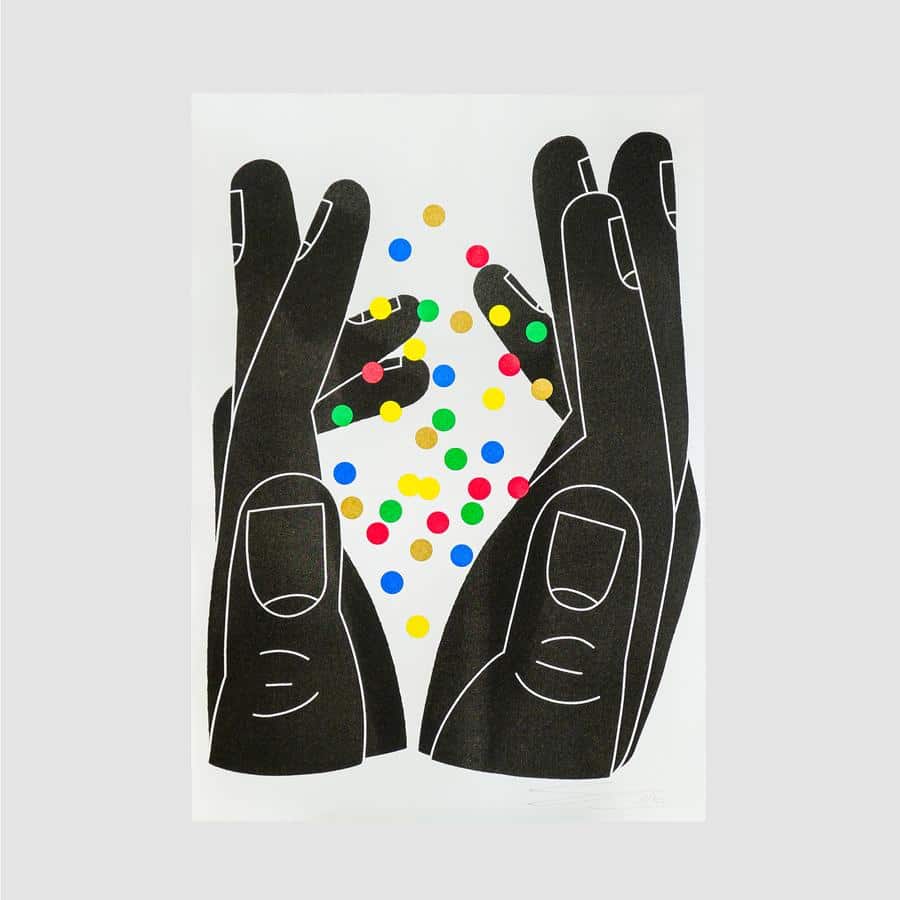‘Interactive’ may have become something of a buzzword when it comes to gallery exhibitions, with curators keen to draw in visitors and challenge outdated perceptions of galleries as stuffy or intimidating places. These initiatives are to be welcomed of course, if they are helping to change public perceptions of what art is.
However sometimes, the ‘interactive’ features may amount to little more than a digital touchscreen with a brief summary of the artist’s life or a particular artistic movement. It may even be a small label beside a framed artwork giving the basic details about the work, such as the title, name of the artist, and date it was created.
One gallery in Edinburgh is really putting its money where its mouth is, and inviting members of the public to hang their own artworks. The Edinburgh Evening News reports that the Edinburgh Printmakers exhibition, titled “Castle Mills: Then & Now, Whose Gallery is it Anyway?,” will invite aspiring artists to add their own work, or curate existing works.
A spokesperson said: “The rules are simple: anyone can add work and/or choose to co-curate the exhibition by moving artworks in the space in ways that make sense to them.” They added that the exhibition was “a real-time, in-person interactive experience”.
The exhibition will open on 19 April and run until 30 June, during which time anyone can bring their own creations, whether they be a traditional framed painting, a textile, sculpture, drawing, or even a performance. Members of the public can also move, rearrange, or hide any of the artworks.
The venue is Edinburgh Printworks, which was established in the 1960s as the UK’s first open access print studio in the UK. It is located in a former factory in Castle Mills, Dundee Street, Fountainbridge. In the past, the gallery has hosted exhibitions by artists including John Byrne, Eduardo Paolozzi, Alasdair Gray, and Alberta Whittle.
Ilaria Casini, heritage engagement officer, said: “This exhibition will bring together perspectives and stories from Edinburgh Printmakers’ history and heritage.”
“We will ask questions about mark-making, art curation and the relationship between artist and audience by giving people and communities agency to take over our large, light-filled, street-facing gallery space.”
“We want everyone to learn and talk about art in a friendly and welcoming environment, informally through chatting, and via talks and tours over the duration of this project.
“As the public continuously modifies the exhibition, it will never remain exactly the same, prompting a reflection on printmaking and the visual arts that goes beyond a single curator’s selection. We’re looking forward to the conversations, artistic discoveries and celebration of creativity that lies ahead.”
Local schools and community groups will be involved in the project, and there will be a learning studio where anyone can create their own work. There will be a series of workshops and talks about the relationship between galleries, curators, artists, and audiences. It will explore the reasons why people seek to connect with artworks.
The aim of the event is to engage with a broad range of visitors and allow them to take a proactive role in their gallery experience. This agency is designed to challenge the norms of gallery ownership. Organisers who want to arrange their own events are requested that admission should be free or ticketed at £5 or less, with a Pay What You Can option.
The event space has capacity for 40 seated people or 60 standing, and time slots are one hour long, and can be booked consecutively if necessary.
Edinburgh Printmakers chief executive Janet Archer said: “This landmark building was once a thriving hub as thousands of people came through its doors each day. This heritage aligned with our own as an active membership providing open access, printmaking facilities since it opened in 1967.”
“Whose Gallery is it Anyway? is the next step in our social role as a hub for a new community collectively shaping future heritage through sharing stories and charting them through visual expression of all kinds.”
The heritage project is supported by the National Lottery Heritage Fund, as part of an outreach and engagement programme. The gallery is fully wheelchair accessible, and there are disabled toilets, unisex toilets, baby changing facilities, a shop, and a cafe.
